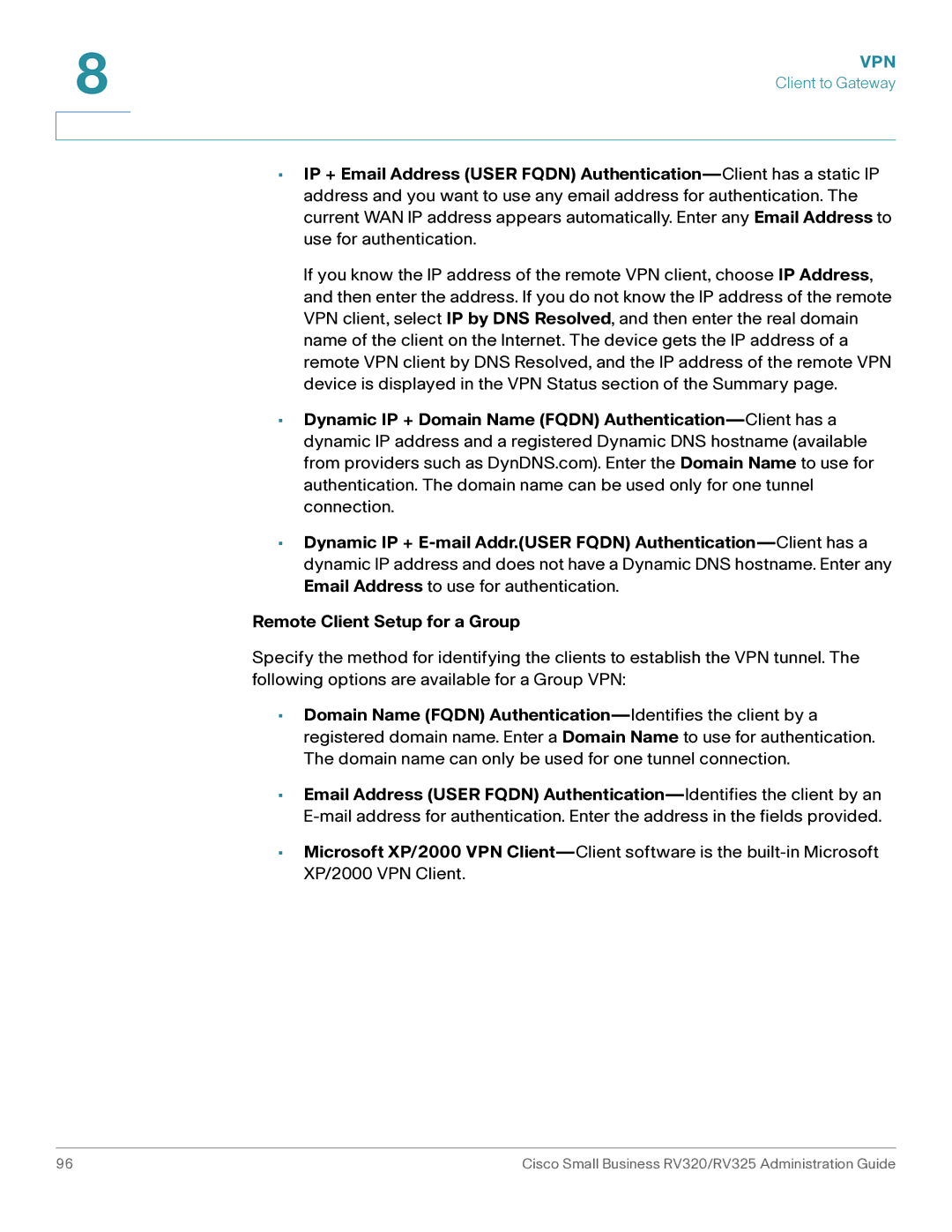
•IP + Email Address (USER FQDN) Authentication—Client has a static IP address and you want to use any email address for authentication. The current WAN IP address appears automatically. Enter any Email Address to use for authentication.
If you know the IP address of the remote VPN client, choose IP Address, and then enter the address. If you do not know the IP address of the remote VPN client, select IP by DNS Resolved, and then enter the real domain name of the client on the Internet. The device gets the IP address of a remote VPN client by DNS Resolved, and the IP address of the remote VPN device is displayed in the VPN Status section of the Summary page.
•Dynamic IP + Domain Name (FQDN) Authentication—Client has a dynamic IP address and a registered Dynamic DNS hostname (available from providers such as DynDNS.com). Enter the Domain Name to use for authentication. The domain name can be used only for one tunnel connection.
•Dynamic IP + E-mail Addr.(USER FQDN) Authentication—Client has a dynamic IP address and does not have a Dynamic DNS hostname. Enter any Email Address to use for authentication.
Remote Client Setup for a Group
Specify the method for identifying the clients to establish the VPN tunnel. The following options are available for a Group VPN:
•Domain Name (FQDN) Authentication—Identifies the client by a registered domain name. Enter a Domain Name to use for authentication. The domain name can only be used for one tunnel connection.
•Email Address (USER FQDN) Authentication—Identifies the client by an E-mail address for authentication. Enter the address in the fields provided.
•Microsoft XP/2000 VPN Client—Client software is the built-in Microsoft XP/2000 VPN Client.
96 | Cisco Small Business RV320/RV325 Administration Guide |
